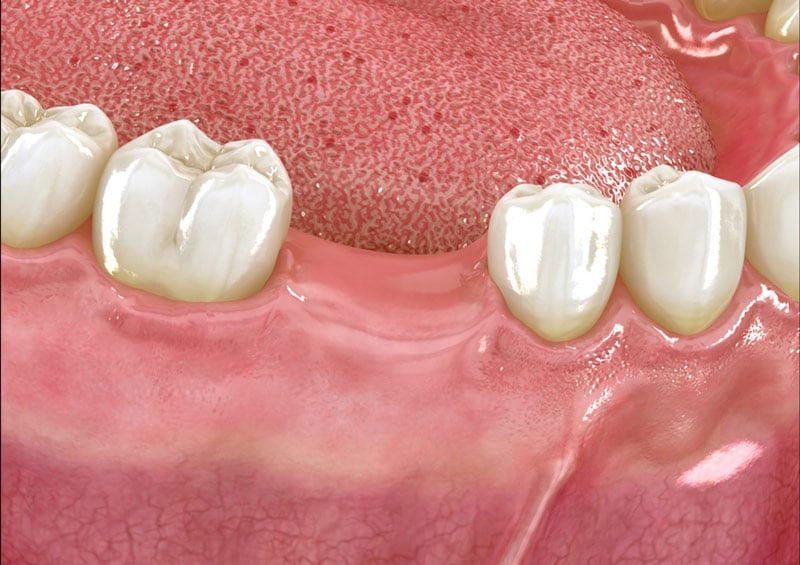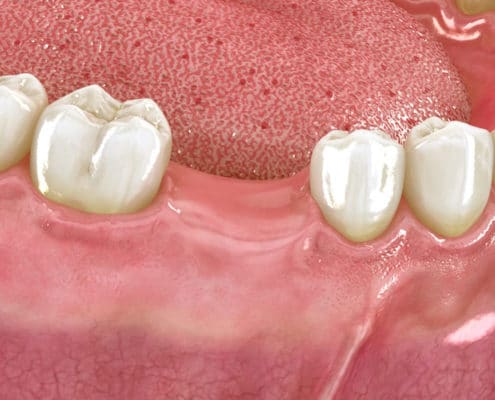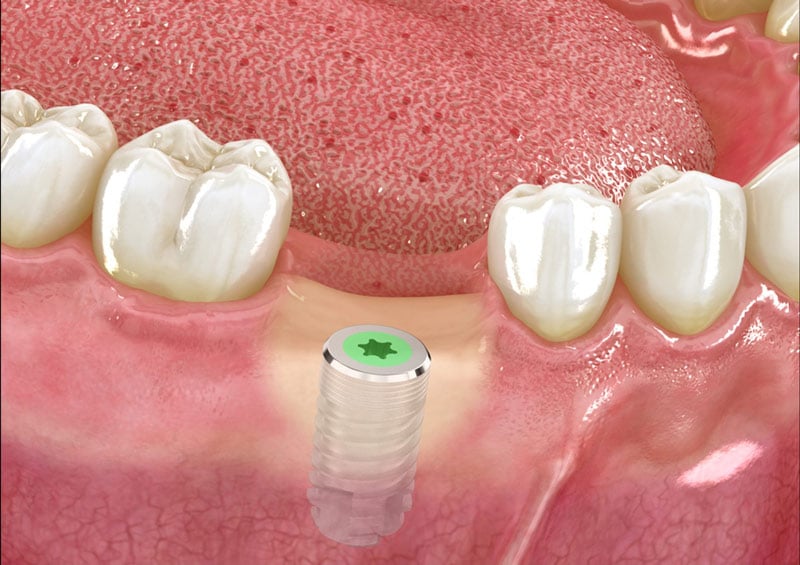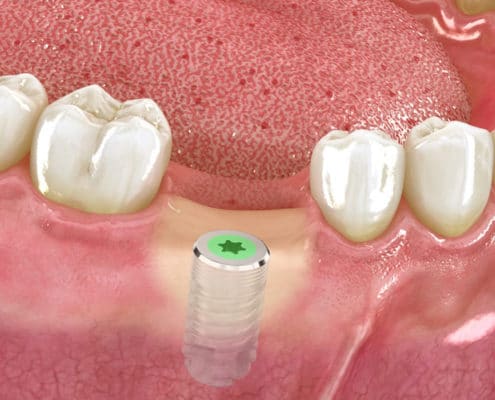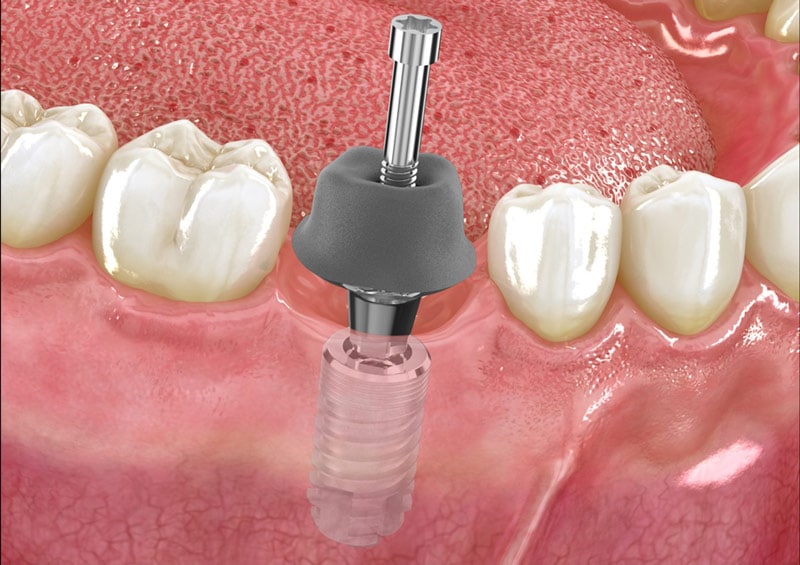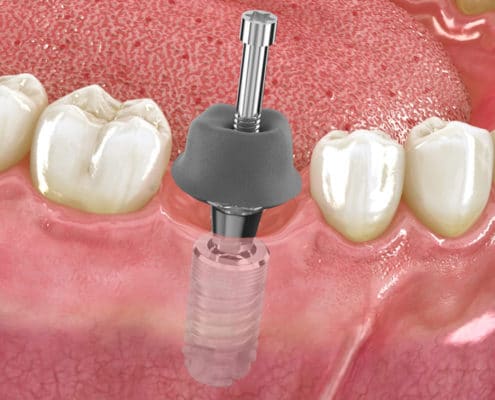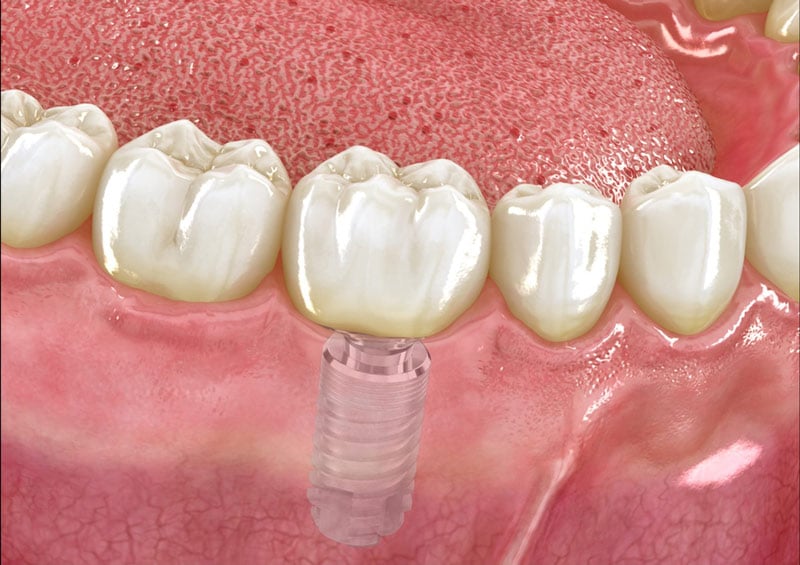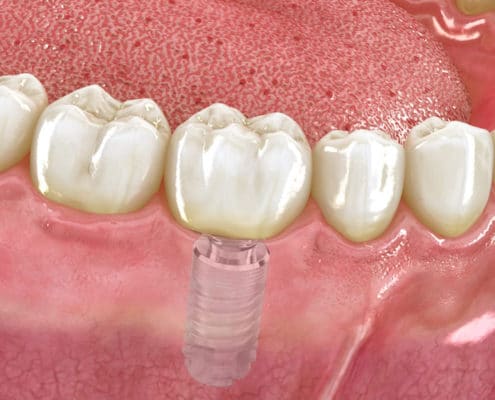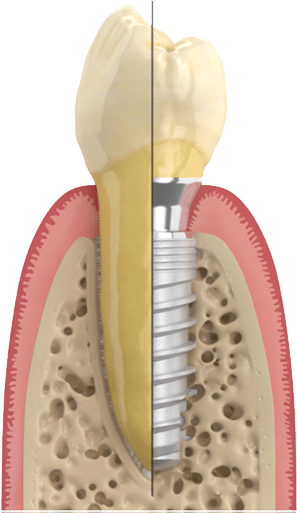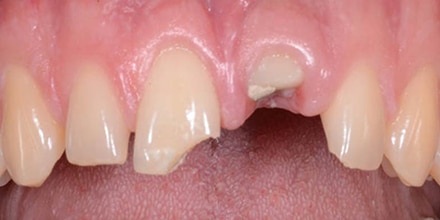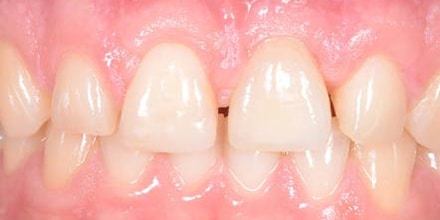A dental implant looks like a titanium screw that the dentist inserts into the jawbone to replace the root of a missing tooth.
Titanium is biocompatible: it is naturally accepted by the body’s tissues. As a result, the alveolar bone (jawbone) will heal and reform around the implant once it is in place. This process takes 3 to 6 months on average. This is known as osseointegration.
This specificity means that the rate of successful integration of a titanium implant is very high, as is its lifespan, which averages 15 years, depending on a number of factors – including, of course, oral health. The patient regains normal mastication and speech.
Once the bone has healed, a fixed dental prosthesis (a ceramic crown) can be attached to the implant using an abutment to replace the visible part of the tooth. The result is 100% natural-looking, undetectable and without metal edging. In some cases, a bridge may be recommended – in this case, the two teeth surrounding the tooth replaced by an implant and crown are cut to serve as abutments.

